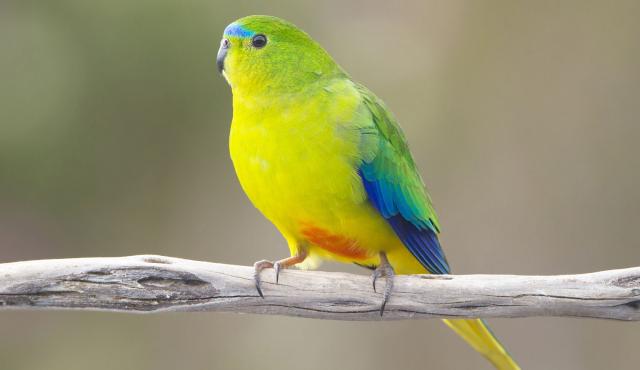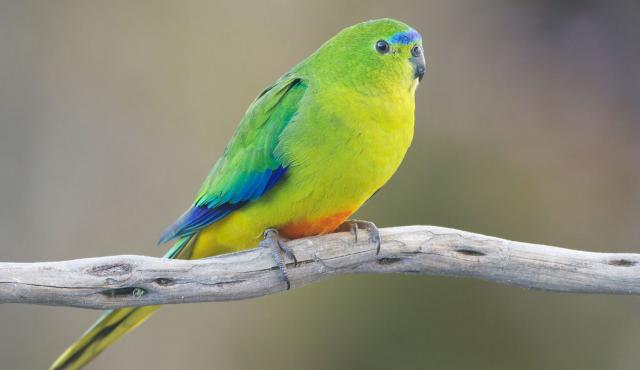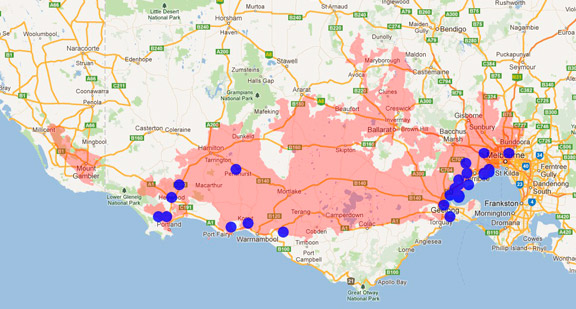A range of teacher professional learning programs will be developed to accompany the Biodiversity of the Western Volcanic Plains online outreach...



Orange bellied Parrot
Neophema chrysogaster
Migrates between the Australian mainland in winter and Tasmania in the summer where they breed. Nests in eucalypt hollows. Females lay 4-6 eggs and are responsible for incubating and caring for the young. Males feed the females and the juveniles. Females leave the nest when the juveniles are 10 days old to help collect food. Juveniles leave the nest after 4-5 weeks and migrate to Victoria or South Australia in March-April.
| Details | Description |
| Type | Bird |
| Group | Parrot |
| Other Common Names | Orange-breasted Grass-parakeet, Grass Parakeet, Orange-bellied Parakeet, Yellow-bellied Parrot |
| Identifying Characteristics | |
| Distinctive Markings | Male has a broad, blue frontal band across the forehead which stops at the eye. This is less conspicuous in females and absent in juveniles. Orange belly patch is more extensive in males than females. |
| Diet | Feeds on the ground or on low growing shrubs. Feeds on seeds, fruits, flowers and berries. |
| Habitat | Mainly saltmarshes, littoral heathlands and low scrublands, as well as grassy areas. This species breeds in eucalypt woodlands in south-west Tasmania near button-grass plains. |
| Native Status | Native to Australia |
| Sounds | Distinctive high pitched, metallic buzz alarm call. Flight call is a high pitched, rapidly repeated "tzeet, tzeet". |
| Taxonomy | |
| Phylum | Chordata |
| Class | Aves |
| Order | Psittaciformes |
| Family | Psittacidae |
| Genus | Neophema |
| Species | chrysogaster |

Distribution maps indicate current and historic locations where species have been sighted.
Source: Atlas of Living Australia
| Conservation Status | |
| DEPI Advisory List | Critically endangered |
| FFG Act | Listed as threatened |
| EPBC Act | Critically endangered |
| FFG Action Statement |
The conservation status of species is listed within Victoria and Australia.
The Department of Environment and Primary Industry (DEPI) Advisory List consists of non-statutory advisory lists of rare or threatened flora and fauna within Victoria.
The Flora and Fauna Guarantee Act 1988 (FFG Act) lists threatened species in Victoria. Under the Act, an Action Statement is produced for each listed species.
The Environment Protection and Biodiversity Conservation Act 1999 (EPBC Act) is the Australian Government’s key piece of environmental legislation, listing nationally threatened native species and ecological communities.



